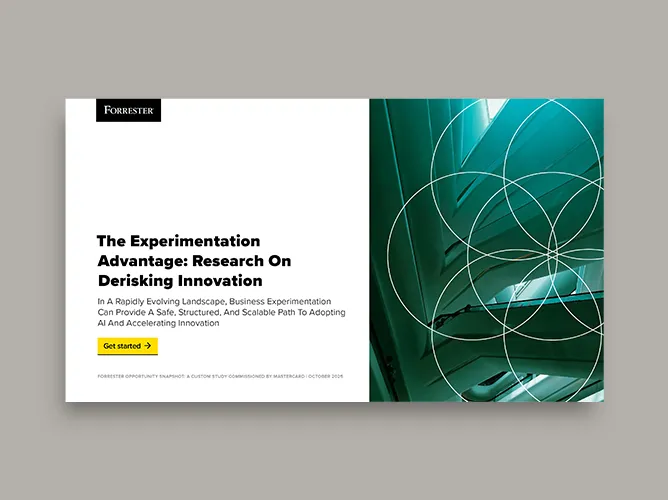By: Siddharth Jain
Published: July 22, 2024 | Updated: October 29, 2025
Read time: 7 minutes
Introduction
The rise of online booking platforms and alternative accommodations options has created fierce competition in the hospitality industry. Industry players are going the extra mile to differentiate their brands and develop deeper connections and loyalty among guests. Guest loyalty programs are key for hotels and travel companies to improve customer retention and foster loyalty and trust among guests, especially at a time when the travel industry is breaking boundaries with record number of travelers and record spending.
A successful loyalty program incentivizes repeat business, drives direct purchase, consolidates business across multiple hotel and travel products and recognizes the best and the most profitable customers. This reduces the involvement of third parties in driving business and limits the commissions paid to those third parties.
However, an effective guest loyalty program is more than just discounts and rewards. It requires a nuanced understanding of guest preferences, behavior and expectations. A strategic approach to designing incentives that resonate well with the customers and their needs is essential. Read on to learn the core principles of guest loyalty and some best practices.
- Table of Contents
What is guest loyalty in the hospitality industry?
Guest loyalty in the hospitality industry is a relationship between guests and hospitality brands that is characterized by consistency, satisfaction, trust and preference for a brand.
What is a hotel guest loyalty program?
A hotel guest loyalty program is a strategic framework used by hotels to incentivize repeat business and nurture long-term relationships with guests by offering rewards, perks and exclusive benefits. These programs use technology and data to create personalized experiences that resonate with individual guests. A crucial component of modern loyalty programs is the integration of mobile apps, which play a pivotal role in enhancing engagement and convenience for members.
In the following sections, we will further uncover some key elements which contribute to the success of a hotel guest loyalty program.
How can a loyalty program help retain customers?
A well-designed loyalty program strategy can drive sustainable business growth. It can help hotels retain more customers by addressing key drivers of loyalty and fostering deeper connections with guests. Great guest loyalty programs can include the following elements:
- Rewards
- Recognition
- Personalization
- Social triggers
- Pressure points within the relationship
- Omni-channel experiences
- Feedback
Rewards give members a tangible payback to continue to consolidate spend at the property.
Recognition provides elevated experience accrued over time driven by visit frequency and spend.
Personalization includes highly targeted offers, experiences, curated content, services and rewards by leveraging data analytics, enhancing the perceived value of the loyalty program.
Social triggers like gamification and social sharing drive deeper engagement by leveraging internal motivational triggers or external network relationships of customers.
Pressure points within the relationship drive incremental actions through tactics such as tiered rewards and points expiration and taps into psychological and subconscious triggers that encourage continued participation and drive engagement.
Omni-channel experiences allow members to easily access rewards, track progress and redeem benefits by integrating loyalty program features into mobile apps. Mobile apps help in embedding customers into the overall ecosystem that the hotel chains create and help in forming habits around favorable behaviors. Such an ecosystem and experience increase customer stickiness.
Feedback enables hotels to gather insights such as pain points for guests by establishing a structured system for feedback through surveys and reviews, which can then be used to refine program mechanics and loyalty programs and continuously improve the guest experience.
What makes a great guest loyalty program?
A great guest loyalty program is characterized by its ability to deliver convenient and tangible value to members while fostering a sense of belonging and appreciation.
It’s important to be aware of challenges and best practices for building a loyalty program. Here are examples of key benefits that contribute to the success of a guest loyalty program and examples of certain situations to avoid:
Most common expectations from guests include:
- Complimentary room upgrades: Offering complimentary room upgrades to loyalty program members is one of the most highly valued benefits. It enhances the overall guest experience and promotes the emotional connection of the guests with the hotel chain. For example, Marriott Bonvoy's loyalty program provides elite members with automatic room upgrades based on availability.
- Priority check-in and late check-out: Such additional benefits for the loyalty program members add to the customer experience, demonstrating a commitment to customer convenience and satisfaction. For example, Hilton Honors offers elite members guaranteed late check-out, allowing guests the convenience of a seamless departure experience.
- Complimentary services: Complimentary services such as breakfast, airport transfers, laundry and ironing services add great value to the guest experience and enhance the overall value proposition of the loyalty program. For example, IHG Rewards Club provides members with complimentary fast Wi-Fi access during their stays.
Strategies to avoid include:
- Generic discounts: Offering generic discounts without any personalization efforts can dilute the perceived value of the loyalty program to the members. According to a report by computer software company Oracle, hotel guests prefer programs offering exclusive benefits and personalized rewards over generic discounts.
- Complex redemption processes: Complex redemption processes that are difficult to manage and use can lead to disengagement among members. For example, if an airline or hotel had a complex and cumbersome redemption process that created challenges for members in redeeming points for flights or rooms, it could lead to frustration and a decline in customer satisfaction.
- Limited reward availability: Restricting the availability or usage of rewards may alienate members who are unable to redeem their benefits. Imagine accumulating points for a dream vacation package, only to find out that the reward seats are no longer available on the selected dates. This creates a sense of being cheated and damages customer trust.
By offering attractive and sustainable benefits that enhance the guest experience and satisfaction and avoiding pitfalls such as generic discounts, hotels can create a guest loyalty program that drives engagement, fosters loyalty and contributes to long-term business success and growth.
10 things to include in your guest loyalty program
1. Clear and transparent reward structure:
This eliminates confusion and provides members with a clear direction of how they can earn and redeem rewards, enhancing their overall motivation to participate in a loyalty program.
2. Seamless enrollment process with compelling sign-up incentives
This incentivizes guests to join the loyalty program and start accruing rewards at the first point of contact, driving initial engagement and future loyalty.
3. Mobile-friendly platform for easy access to rewards and account management
Having a seamless mobile-app experience allows users to engage with loyalty programs anytime and anywhere and can make the overall experience better by speeding up processes such as redemption of points and by giving users an option to interact with staff very easily. This helps in driving increased usage and customer engagement.
4. Regular communication and engagement with members
This helps keep the loyalty program top-of-mind and drives repeat interactions.
5. Tiered membership levels with escalating benefits
This motivates members to strive for higher status levels to get increasingly valuable benefits, driving increased spending and loyalty.
6. Partnerships with other businesses to expand redemption options
This enhances the value proposition of the loyalty program, providing members with more opportunities to earn and redeem rewards.
7. Flexibility in reward redemption options
While customers engage and participate in loyalty programs primarily to earn complimentary nights and tier benefits such as room upgrades, lounge access etc., further widening the breadth of redemption helps the loyalty program cater to even more diverse preferences and lifestyles and widens the appeal and value proposition of the program.
8. Leveraging data-driven insights for personalization
This helps in designing personalized communication and offers that resonate with individual members.
9. Continuous innovation to stay ahead of competitors
This keeps the loyalty program fresh and relevant, driving excitement and engagement among members while staying one-step ahead of competitors.
10. Exceptional customer service and support
This builds trust and respect for the hotels among members, fostering positive experiences and long-term relationships with the brand.
By incorporating such elements into a guest loyalty program, managers can create a compelling and rewarding experience for members of the loyalty program, driving increased and sustainable engagement, satisfaction, and loyalty.
Conclusion
In an era where customer experience has taken the center-stage, guest loyalty programs serve as the key tool for hotels to differentiate themselves and build and grow strong relationships with guests. By understanding the core elements of a successful loyalty program and implementing strategies to enhance the customer experience at every touchpoint, hotels can not only increase customer retention, but also foster brand advocacy and long-term success in the competitive hospitality industry.











